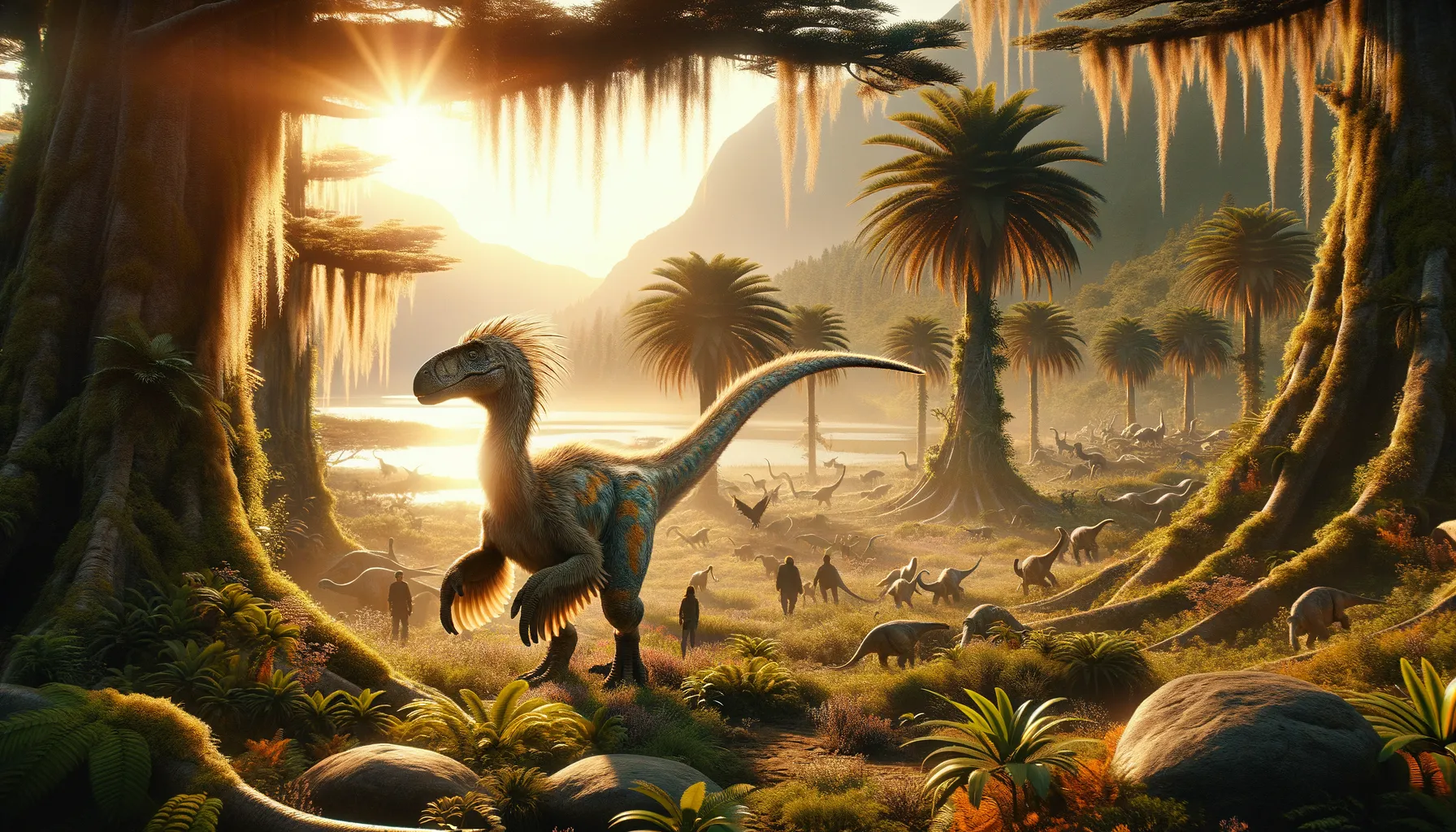
Heptasteornis
Small, swift, and clever Cretaceous dweller.
Period
Cretaceous
Length
Up to 2 meters long.
Height
Approximately 1 meter tall.
Weight
Around 25 kilograms.
Heptasteornis was a small theropod dinosaur known for its bird-like features, estimated to have lived during the Late Cretaceous period. This creature is often associated with the Hateg Island, an area known for its unique dwarf dinosaur fauna. Its remains have provided significant insights into the diverse and complex ecosystems of prehistoric Europe.
Diet
Heptasteornis likely had an omnivorous diet, feeding on small animals and insects. Its diet might have also included a variety of plant matter, making it an adaptable feeder in its environment.
Hunting
With its moderate speed, Heptasteornis would use stealth and surprise to hunt small prey. It likely foraged for insects and other small creatures, relying on quick strikes to capture its food.
Environmental challenges
Heptasteornis lived on an island environment where resources were limited. This necessitated adaptability in both diet and habitat preference. Predation and competition with other species were constant challenges in its ecosystem.
Speed
Relatively slow, suited for short bursts.
Lifespan
Estimated to be around 20 years.
First discovery
First discovered in 1975 in Romania.
Fun Facts
- Heptasteornis is known from only a few bones, making it a bit of a mystery in the dinosaur world.
- It lived during the Late Cretaceous period, around 70 million years ago.
- Heptasteornis is believed to have been a small, bird-like dinosaur.
- The name 'Heptasteornis' means 'seven-star bird' in Greek, inspired by its original classification as a prehistoric bird.
- It was found in Transylvania, which is now part of modern-day Romania.
- Some scientists initially thought Heptasteornis might be a type of flightless bird called a large ibis before reclassifying it as a dinosaur.
- Even though not much is known about it, Heptasteornis helps scientists piece together the complex puzzle of dinosaur evolution.
Growth and Development
Heptasteornis likely grew rapidly to maturity to evade predators. Its small size suggests an evolutionary adaptation to island dwarfism, which occurs when species evolve smaller sizes due to ecological constraints.
Habitat
Heptasteornis inhabited subtropical environments with diverse flora and fauna. It lived in wooded areas and open fields, providing it with ample opportunities for hunting and foraging. Seasonal changes may have influenced its migratory patterns and food availability.
Interaction with other species
Interaction with other dinosaurs was likely limited to competition for food resources. It may have coexisted with other dwarf dinosaurs found on Hateg Island. The presence of predators would have necessitated vigilance and possibly group living for protection.
Natural lifespan
Heptasteornis had an approximate lifespan of around 20 years.
Reproduction
Reproduction was likely oviparous, with eggs laid in nests. Parental care might have involved protecting the nest from predators and ensuring young hatchlings had access to food. Heptasteornis may have produced multiple offspring at a time to increase survival chances.
Social behaviour
Heptasteornis might have exhibited some social behavior, such as foraging in small groups. This could have offered protection from predators and facilitated learning among younger individuals. However, solitary behavior could have also been common, suitable for its island environment.
Fossil locations
Fossils of Heptasteornis have been found primarily in Romania, particularly in the Hateg Basin. These findings contribute to our understanding of the unique insular ecosystems in Late Cretaceous Europe. The sparse number of specimens makes it a rare and intriguing subject of study among paleontologists.
